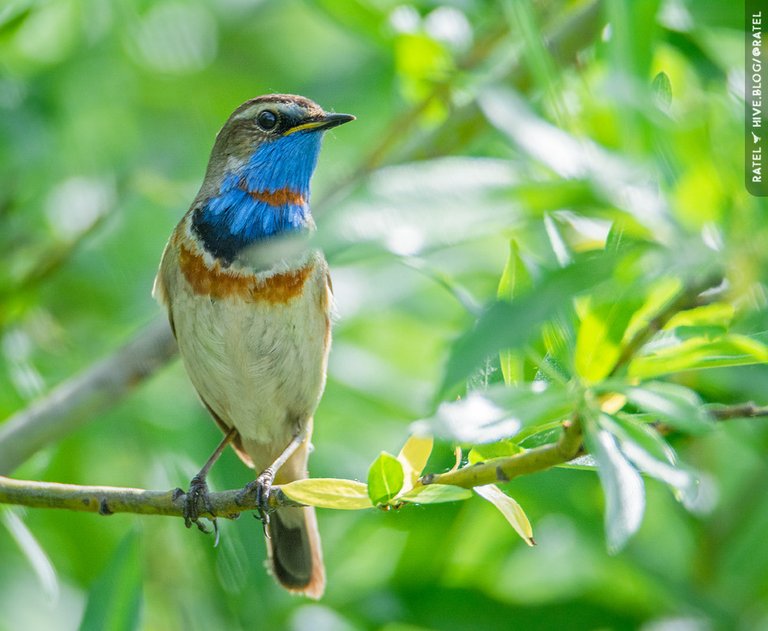Birdwatching - 3070 🐦

🦉 The bluethroat (Luscinia svecica)
- Luscinia (lat.) Nightingale
- svecica suecicus (lat.) Swedish; the name svecica, according to the history of the description, is not a toponym, but is given for the color of the male's chest:
Olof Rudbeck junior, Swedish botanist and birdwatcher, mentor to Carl Linnaeus, having discovered the bluethroat in 1695 in Lapland, he gave it the name Avis Carolina in honor of the Swedish king Charles XI and the blue-yellow Swedish flag (in those days the yellow color on the flag was more reddish), and K. Linnaeus in 1758, when the absolute power of the monarchy in Sweden was no longer, considered the name svecica more correct than carolina (Jobling, 2010)

Every year at the end of April or beginning of May I go to the neighboring region to meet these birds. By this time the males are already actively singing in the flooded meadows, regardless of the weather. In my region these elegant birds appear only after a week or two.

Although the birds are beautiful, it is very difficult for an unprepared person to see them. The birds hide very carefully in the branches and foliage of bushes and thickets, and only a loud song indicates that there is someone inside. But it is enough to simply turn on the voices of these birds on your phone and then the male himself will jump out from the depths of the thickets and sing even more actively and demonstratively.

| Camera | Lens |
|---|---|
| Nikon D5200 | Tamron SP AF 150-600mm f/5-6.3 Di VC USD |
hive-106444
birdwatching
birdphotography
birding
photo
wildlifephotography
vyb
proofofbrain
ecency
ecency
0
0
0.000
https://www.reddit.com/r/birdwatching/comments/1l32klg/bluethroat_luscinia_svecica/
This post has been shared on Reddit by @edeyglezsosa through the HivePosh initiative.
🎉🎉🥳 Yeah , party time 🥳🎊🎊
Your post has just been curated and upvoted by Ecency
keep up the good work
Join us on the Ecency Discord
!INDEED !BBH
Oh so beuatiful pictures of the bluethroat, I recently also took some pictures of this bird, but you were much closer and your pictures are great as always!